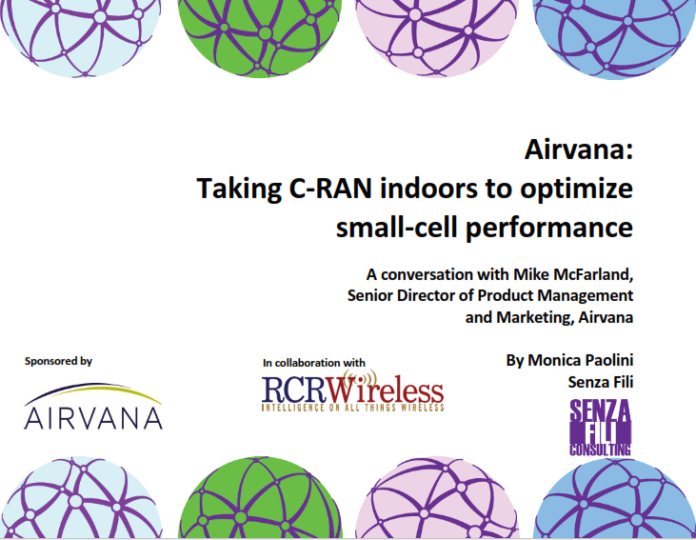A conversation with Mike McFarland, senior director of product management and marketing, Airvana
Airvana has worked on small cells for a long time, historically focusing on CDMA femtocells used in residential and small-business environments to improve coverage and capacity. With the OneCell solution, Airvana has moved into the enterprise LTE market using a single-cell C-RAN architecture to address crucial cost and interference challenges that DAS and small cells, respectively, face in indoor settings.
“We developed the OneCell concept after looking at some of the challenges in an enterprise or public venue environment. You want to have consistent data rates throughout the building. When you have standalone cells, they create borders. At those borders, they create interference. Interference has tremendous impact on people’s data rates. In these areas of interference we’ve measured degraded performance by up to 90%. It also increases jitter, which has a significant impact on VoLTE,” Mike McFarland, senior director of product anagement and marketing at Airvana told us.
Advancing C-RAN architecture
Airvana’s OneCell was designed to address these issues. “Having the system act as a single cell has significant advantages, because you don’t have a decrease in data rates. You don’t have the issue with the jitter. You have very good data performance. You have very good voice performance. There’s the added benefit that you don’t have any handovers. And you have just a single interface to the operator’s core network,” McFarland said.
Read the full interview or watch the video to find out more about Airvana’s indoor solution for the enterprise.
This conversation will be included in the Senza Fili report “Charting the path to RAN virtualization: C-RAN, fronthaul and HetNets” that will be published in February 2015. If you would like to receive a complimentary copy of the report, please click here and you will be among the first to receive the report when it is finalized.

